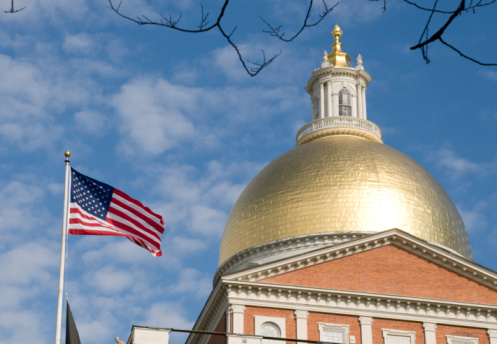NEJHE presents exclusive articles by New England’s governors on higher education in their states …
 Thanks to our dedicated teachers and committed students, Massachusetts leads the nation in student achievement and classroom innovation. We’ve made education our top priority because it’s the path to a more fulfilling life, a more rewarding career and a richer society. I have personally experienced the transformative power of education and have a deep understanding of what a good teacher and a good school can mean to a young person.
Thanks to our dedicated teachers and committed students, Massachusetts leads the nation in student achievement and classroom innovation. We’ve made education our top priority because it’s the path to a more fulfilling life, a more rewarding career and a richer society. I have personally experienced the transformative power of education and have a deep understanding of what a good teacher and a good school can mean to a young person.
We’ve supported public education by investing in our schools at the highest levels in the history of our state, even when the bottom was falling out of the rest of the budget. And we’ve added new reforms that raise teacher accountability and encourage more innovation in the classroom to reach the children stuck in the achievement gap. These investments in money and time are working; our students rank first in the nation in student achievement and have for each of the past five years. We rank in the top five internationally in math and science. And we were the top scorer in the national Race to the Top competition.
The targeted investments we’ve made and the results we’ve seen don’t stop at K-12. We are mirroring these gains at the level of higher education. Before I was elected governor, I spent most of my professional life in the private sector and did business all over the world. I can tell you from experience that education is our international calling card. We are known the world-over for our highly skilled workforce and world-class education system. Massachusetts is blessed with an unusually high concentration of great public and private universities that have spawned a vast array of research institutions, teaching hospitals and tech hubs.
Our 29 outstanding public higher education institutions are at the heart of this mix and essential to the health of our workforce. They host the skilled innovators, entrepreneurs and leaders that will graduate prepared to compete in the global economy and choose to enrich our Commonwealth by residing here. Continuing to support this excellence is and will remain a challenge in the budget environment we are facing. But by prioritizing education as part of an overall growth strategy, we will continue our investments in educational innovation and promote Massachusetts public higher education on the national and world stages.
That starts by finally building up our campuses again. We’re delivering on a $2 billion higher education capital improvement plan to modernize our campuses and provide students and faculty with access to cutting-edge facilities and technology. That means new buildings, more access to the technology they’ll need to use in their future workplaces and more support for students at every stage of their educational career.
We are sharpening and refocusing the resources we already have in place. Under the leadership of Commissioner of Higher Education Richard Freeland, we have launched the Vision Project, which consists of a series of strategies to unite the public higher education system and promote efficiency, benchmark and track progress, increase transparency and accountability and raise the profile and recognition of the campuses.
We’re doing some exciting work connecting the dots between different areas of public education that didn’t necessarily collaborate before. Pathways Early College Innovation School located at Mount Wachusett Community College is a great example. Parents and teachers in the school district there came together and created an Innovation School, an in-district charter school we enabled through last year’s Education Reform Bill. In partnership with Mount Wachusett Community College, they created a program for 11th grade students at risk of dropping out to take advantage of the resources offered by the community college in an environment that supported their ambitions and focused their studies.
We’re working to ensure a smoother transition from high school to college and between our community colleges and state universities. I have prioritized dual-enrollment programs, which allow high school students to take courses on college campuses for credit that counts toward their diploma and toward a college degree. The program provides access to advanced subject matter and also exposes high school students to life on campus to build their confidence so they are better prepared when they transition to higher education. We instituted the MassTransfer program, which allows students to fluidly transfer across our 29 public campuses. And the University of Massachusetts Amherst just launched the Community College Connection Program, which gives preference to admissions, housing and financial aid to talented community college students seeking to continue their studies at our flagship public campus.
Finally, we’re scaling up efforts to match higher education with local employers to ensure students are fully prepared to enter the workforce upon graduation. I have tasked a group of economic development and education officials to work on improving our system’s ability to respond to industry and employer needs, especially through our community colleges. Members of my team are taking a close look at how we can better orient our higher education programs to meet the needs of a dynamic, evolving workforce, and I look forward to implementing their recommendations.
These targeted investments along with our reforms and the focus we’ve placed on connecting our students with opportunities for success, are working. A world-class, accessible system of public higher education is an important component of our growth strategy and our commitment to competing in the global economy. Massachusetts already hosts the brightest graduates and strongest institutions in the country. But best in the world is where we’re heading.
Deval Patrick is serving his second term as Massachusetts governor.
[ssba]
